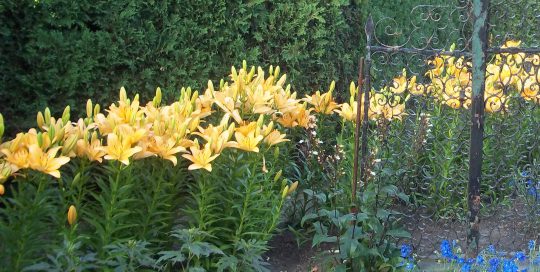Who doesn’t love the wide world of tulips that will be soon on display at your favorite public garden? How would you like to create something similar in your home garden, albeit on a slightly smaller scale? It’s not that difficult, and it’s definitely worth the effort.
In this article, Jean Starr, one of the top contributors at PlantersPlace.com, discusses the various types of tulips and how to shop for each including some of the best online sources that are taking orders now.
It is hard not to be in awe of the beauty found in these flowers. Their colors range from vivid crayon shades to pastel and they come in forms that run the gamut from parrot and lily-flowered to fringed, double and multi-flowering. There are tall ones, short ones, and even mid-sized ones. Some tulip varieties appear early and others quite a bit later.
The Problem with Tulips – One Hit Wonders!
In Jean Starr’s view, tulips are the ultimate luxury — kind of like a wedding gown — you only wear it once and during a ‘memorable ceremony’. In the first year after planting, a tulip’s beauty is unquestioned. However, if you leave it to bloom again in subsequent years, its evil twin returns — distorted, dwarfed and pale.
It’s admittedly difficult for ordinary gardeners to discard these previously beautiful plants. But that is just what the professionals at the botanical gardens do. Once the spring bulb displays are complete, gardeners pull the tulips up by the thousands in preparation for the next display. Mimicking the pros is pretty much impractical for the typical home gardener.
Varieties That Are Truly Perennials
Instead, home gardeners – even those in the passionate category – want more than a one-year commitment from their tulips. Fortunately, there are options. “We find that Darwin hybrids are the best for re-blooming, large-blossom tulips,” says Lorraine Calder of White Flower Farm. “Species tulips – another variety – are smaller-flowered and are also good repeat bloomers since they are so closely related to their native cousins.”
Kathleen LaLiberté of Longfield Gardens concurs. “Even for Darwin hybrids to come back more than a couple years, they need to be planted in an ideal spot that’s similar to where they would have grown in the wild: winters are cold, summers are hot and dry, and the soil is gritty and well-drained.”
There are no guarantees that these tulips make good perennials, able to return and even multiply each year. But there are some that are much more likely than others if planted according to label directions. According to Atlanta Botanical Garden, Tulipa clusiana, Tulipa tarda, and Tulipa kaufmanniana (in particular “Red Riding Hood”) come back year after year and multiply if planted in the correct spot.
Three varieties that have been coming back in my garden each year since 2013 are ‘Analita’, ‘Exotic Emperor’ and ‘Honky Tonk’.
‘Analita’ and ‘Exotic Emperor’ are varieties of Tulipa fosteriana, a wild species of tulip found in mountainous areas of Central Asia. These also go by ‘Emperor Tulips’. Fosteriana Tulips have the ability to return year after year.
‘Honky Tonk’ is a named variety of the species Tulipa batalinii. Native to Uzbekistan, this division of tulip typically produces single, soft yellow flowers on 6 -10” stems in April. It’s one of the best naturalizers, increasing in numbers to the point where I’ve divided them to plant in more places. Their narrow leaves make them easier to blend into the background when they’ve finished blooming. One of the best mixers for ‘Honky Tonk’ has been Grecian windflower (Anemone blanda) with its low-growing daisy-shaped blossoms that bloom at the same time as ‘Honky Tonk’.
Planting Annuals with Tulips
For those hoping for another tulip show next spring, planting annuals in the bed is a good way to disguise the dying tulip foliage. It’s best, however to select annuals that don’t require lots of moisture. Good choices would be Salvia, Euphorbia, Cosmos, Bachelor’s buttons, Cleome, Dusty miller, globe amaranth (Gomphrena), or blue thimble flowers.








